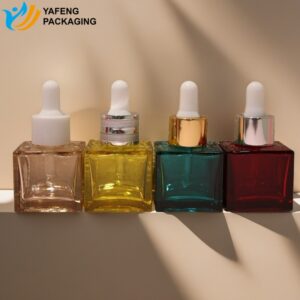
Nachrichten & Blog
Großartige Leistungen in der Wirtschaft werden nie von einer einzelnen Person erbracht. Sie werden von einem Team von Menschen vollbracht. Wir haben diese dynamische Gruppe von Menschen
Perfume is like a delicate work of art, and its unique fragrance is intoxicating. However, the preservation of perfume is related to many factors, among which the choice of bottle and temperature control play a key role. This article deeply explores how the material and design of perfume bottles affect the preservation of perfume, and how the temperature changes the quality of perfume. Through detailed analysis and rich cases, it reveals the secrets behind perfume preservation and helps you properly preserve your beloved perfume so that its fragrance is always as new.
Glass bottles occupy an important position in the history of perfume bottles. Most classic perfumes are packaged in glass bottles. According to statistics, about 70% of perfume bottles on the market are made of glass [Citation 1: Well-known perfume industry research report website]. High-quality glass bottles have good barrier properties, which can effectively isolate air and prevent oxygen from oxidizing with the fragrance in the perfume. For example, natural fragrances commonly found in perfumes, such as lavender essential oil and rose essential oil, are prone to oxidation once they come into contact with a large amount of oxygen, causing the aroma to deteriorate. At the same time, glass bottles have a certain blocking effect on light, but they are not completely impeccable. Studies have shown that ultraviolet rays and some visible light can penetrate glass bottles and damage perfumes [Reference 2: Research on the effects of light on organic compounds in professional chemical journals]. Therefore, even if glass bottles are used for packaging, perfumes should be kept away from strong light during daily use. For example, if perfume is placed on a windowsill in direct sunlight, the aroma of the perfume may change significantly in just a few weeks.
In order to further enhance the protection of perfumes, aluminum bottles are gradually gaining popularity. Aluminum bottles are excellent at blocking light, and can almost completely block the entry of ultraviolet and visible light. Moreover, aluminum bottles have excellent air barrier properties, which can greatly reduce the contact between the fragrance in the perfume and the outside air. An experiment compared the changes of the same brand and the same perfume in glass bottles and aluminum bottles after being placed in the same environment for half a year. The results showed that the loss of fragrance components of the perfume in the aluminum bottle was only 5%, while the loss of fragrance components of the perfume in the glass bottle reached 15%[Citation 3: Internal R&D experimental data of a perfume brand]. In addition, aluminum bottles are light and not easy to break, which is particularly suitable for carrying during travel, so that you can enjoy the charm of perfume anytime and anywhere.
Spray bottles are very common in modern perfumes. The design of the sprayer can evenly disperse the perfume into tiny particles and spray them out. This uniform spraying method avoids the perfume from gathering in large quantities at the mouth of the bottle and reduces the contact area between the perfume and the air. Studies have found that the area of perfume in a spray bottle that contacts the air each time it is used is reduced by about 80% compared to a direct pouring bottle. [Reference 4: Research papers on perfume packaging design]. This not only reduces the evaporation rate of the perfume, but also allows the various fragrance ingredients in the perfume to be mixed and dispersed more evenly, maintaining the stability and consistency of the fragrance. For example, in daily use, the fragrance of the spray perfume can maintain a similar intensity and layering each time it is sprayed.
Dropper bottles are suitable for some perfumes with higher concentrations or precious perfumes. Dropper bottles allow users to precisely control the amount of perfume used each time, and the amount used each time can generally be accurate to about 0.1 ml [Citation 5: Data provided by perfume packaging manufacturers]. This precise control is particularly important for expensive and fragrant perfumes, which can not only avoid waste, but also better meet users’ needs for fragrance intensity in different occasions. For example, in some formal dinner occasions, you may only need to gently drop a drop of perfume on the pulse to emit a charming fragrance; while in daily travel, you can increase the dosage appropriately as needed.
The damage of high temperature environment to perfume should not be underestimated. When the temperature rises, the molecular movement of various components in perfume intensifies, and components such as essential oils and spices are more likely to undergo oxidation reactions with oxygen. Take perfume containing citrus fragrances as an example. Under high temperature conditions, the terpenes in citrus fragrances will oxidize rapidly, making the originally fresh citrus fragrance gradually become sour and pungent [reference 6: Research results in the field of fragrance chemistry]. Studies have shown that for every 10°C increase in temperature, the oxidation rate of the ingredients in perfume may increase by 2-3 times [reference 7: Experimental study on the relationship between perfume stability and temperature]. In the hot summer, if the perfume is left in the car for a long time, the temperature inside the car often exceeds 40°C. In just one month, the fragrance of the perfume may deteriorate significantly.
High temperature will also significantly increase the volatility of perfume. The fragrance molecules in the perfume gain more energy at high temperatures and are more likely to evaporate from liquid to gas. This causes the concentration of the perfume to drop rapidly, and the durability and stability of the fragrance are greatly reduced. According to experimental tests, at 30°C, a perfume evaporates about 30% faster than at 20°C. [Citation 8: Research Report on Perfume Volatility Characteristics]. A perfume that could last a whole day may only last about half a day in a high temperature environment, and the intensity of the fragrance will be greatly reduced, failing to show its due charm.
Although perfumes are usually adaptable to a certain range of temperatures, extremely low temperatures may cause problems. When the temperature is too low, some ingredients in the perfume may solidify or precipitate. For example, some perfumes containing waxy ingredients or high-boiling-point spices may become cloudy or stratified at low temperatures. However, this is relatively rare because modern perfume formulas are usually developed with adaptability to common ambient temperatures in mind. But if the perfume is in an environment below 5°C for a long time, there is a greater possibility of texture changes. Once this happens, the fragrance of the perfume may also be affected and cannot be emitted normally and evenly.
Fortunately, if perfume precipitates in a low-temperature environment, the quality of most perfumes can be restored to normal when the temperature returns to normal. This is because the solidification or precipitation of the ingredients in the perfume is a physical change to a certain extent, not a change in chemical properties. However, it should be noted that frequent temperature changes, such as a sudden transfer from a low-temperature environment to a high-temperature environment and then back to a low-temperature environment, may have a negative impact on the stability of the perfume. An experiment simulated the situation of perfume under frequent temperature changes. After multiple hot and cold cycles, the aroma components of the perfume underwent irreversible decomposition and the fragrance showed obvious deviations.
Ultraviolet rays and some visible light in light are destructive to perfume and will accelerate the degradation of the fragrance in the perfume. Therefore, it is crucial to store perfume in a dark place. For example, perfume can be placed in a drawer of a wardrobe or in a special perfume storage box. Avoid displaying perfume in a transparent glass window. Even if there are curtains to block it, light may still damage the perfume in the long run. According to research, perfumes that are exposed to light for a long time may have their shelf life shortened by 20% – 30%.
The best storage temperature for perfumes is 15°C to 20°C. Within this temperature range, the ingredients in the perfume are relatively stable, and oxidation and volatilization are slow. This can be achieved by using indoor air conditioning or placing it in a corner of a room with a relatively constant temperature. Data shows that the loss rate of fragrance components of perfumes stored at 15°C – 20°C is less than 10% within a year, while the loss rate of fragrance components of perfumes stored in an environment with large temperature fluctuations (such as 10°C – 30°C) may reach more than 25%.
Making sure that the perfume bottle is well sealed is the key to delaying the oxidation of perfume. The cap or spray head of the perfume bottle should be tightly closed to prevent air from entering the bottle. If the cap is not tightly sealed, oxygen in the air will continue to contact the perfume, accelerating the oxidation process. Experiments show that the air content in a well-sealed perfume bottle can be kept below 5%, while the air content in a poorly sealed perfume bottle may rise to more than 20%, and the oxidation rate of the perfume will also be greatly accelerated.
Frequent opening and closing of perfume bottles will expose a large amount of perfume to the air, accelerating volatilization and quality changes. Every time the perfume bottle is opened, the perfume in the bottle will exchange with the outside air. According to statistics, every time the perfume bottle is opened and closed, the contact area between the perfume in the bottle and the air can increase by about 10 square centimeters [Reference 13: Study on the air contact area during the use of perfume bottles]. Frequent opening and closing of perfume for a long time will significantly accelerate the volatilization speed of perfume, and it will be difficult to maintain the stability of fragrance. Therefore, try to reduce the unnecessary opening and closing of perfume bottles, take them out quickly when using them, and then close the bottle cap in time.
The preservation of perfume is a process that requires comprehensive consideration of many factors. The material and design of perfume bottles provide protection for perfume from a physical level. Bottles of different materials have their own advantages and disadvantages in isolating air and light. Ingenious design can reduce the contact between perfume and air and accurately control the amount of use. The impact of temperature on perfume is more direct. High temperature accelerates oxidation and volatilization, and low temperature may cause texture changes. Although some low temperature effects are reversible, frequent temperature fluctuations will still damage the stability of perfume. By adopting the correct storage methods, such as avoiding light, constant temperature, sealing and reducing frequent opening and closing, we can maximize the shelf life of perfume and keep its fragrance pure and lasting. Let every bottle of perfume continue to exude charm under our careful care and accompany us through a good time.
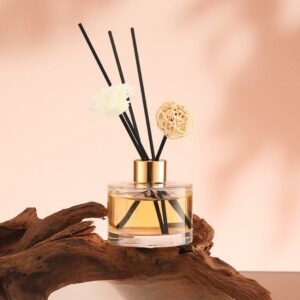
Entdecken Sie die Welt der Rohrdiffusoren und ätherischen Öle! Erfahren Sie, wie Sie die beste Glasflasche, das beste Schilfrohr und die besten Öle für ein entspannendes, aromatisches Zuhause auswählen.
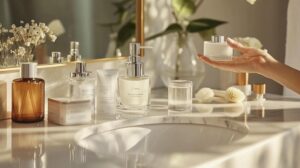
Entdecken Sie, warum Glasverpackungen für die Aufbewahrung von Hautpflegeprodukten unerlässlich sind und Nachhaltigkeit, Sicherheit und erstklassige Ästhetik bieten.
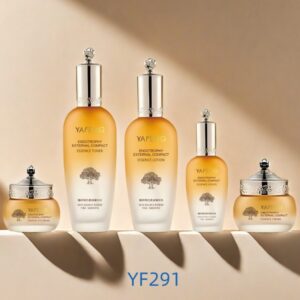
Ihr umfassender Leitfaden für den Import von Kosmetika aus China! Erfahren Sie mehr über FDA-Vorschriften, Kennzeichnungsanforderungen, die Suche nach Lieferanten, Zollabfertigung und vieles mehr.
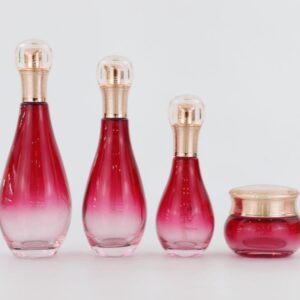
Explore the differences between glass bottles, tubes, and plastic bottles in cosmetic packaging. Learn their pros, cons, materials, and production processes.
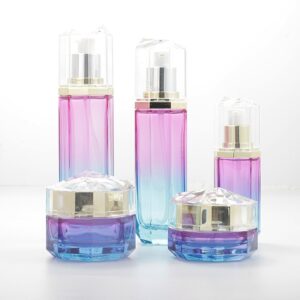
Entdecken Sie, wie Glasflaschen hergestellt werden! Entdecken Sie den faszinierenden Herstellungsprozess dieses alltäglichen Behälters - von den Rohstoffen über die Formgebung bis hin zum Glühen.
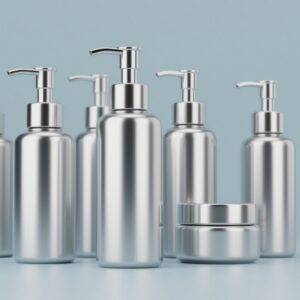
Explore the electroplating process for cosmetic glass packaging—its principles, advantages, materials, coatings, and applications for enhanced beauty and durability.
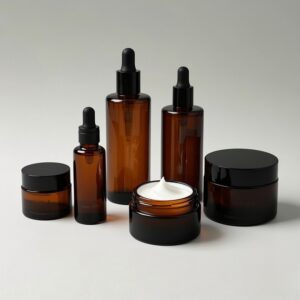
Amber glass bottles offer luxury, UV protection, and stability for beauty packaging. Learn about their production, quality control, and benefits for skincare brands.
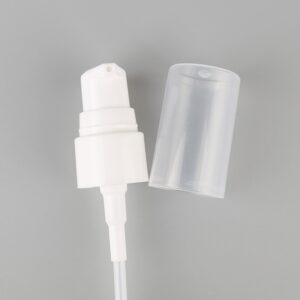
Single-material all-plastic pumps are revolutionizing cosmetic packaging with eco-friendly, cost-effective, and recyclable designs, driving sustainability and brand appeal.
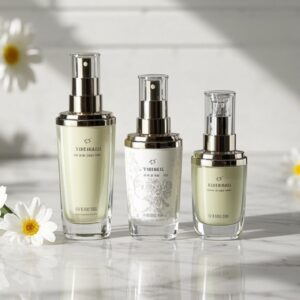
Discover 10 expert tips to choose the best cosmetic bottles, ensuring quality, durability, and sustainability while enhancing your beauty routine effortlessly.
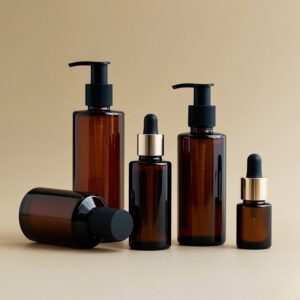
Glass bottles are the best for hair oil storage due to their non-reactivity, UV protection, and ability to preserve quality, ensuring longer shelf life and better efficacy.
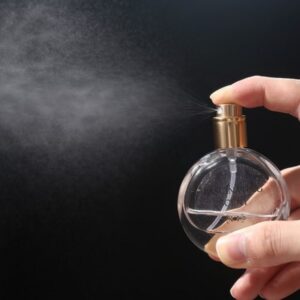
Explore the essential role of spray pumps in cosmetics, covering molding, surface treatment, components, and atomization. Learn how spray pumps enhance product performance and user experience in perfumes, gels, and more.
WhatsApp uns